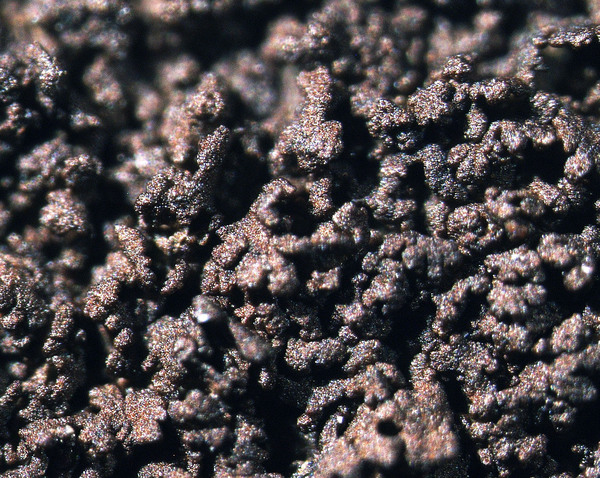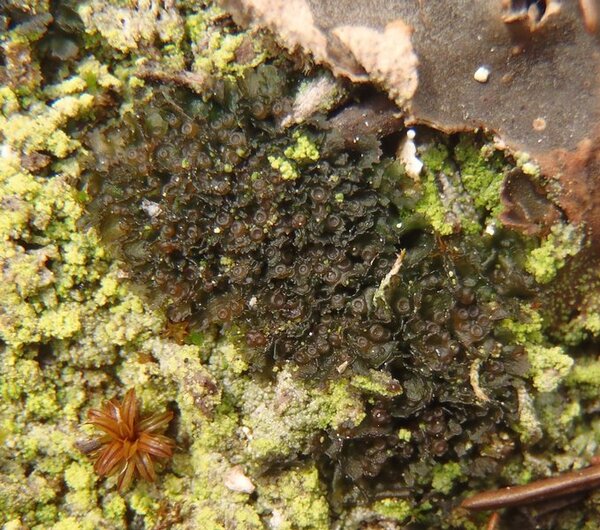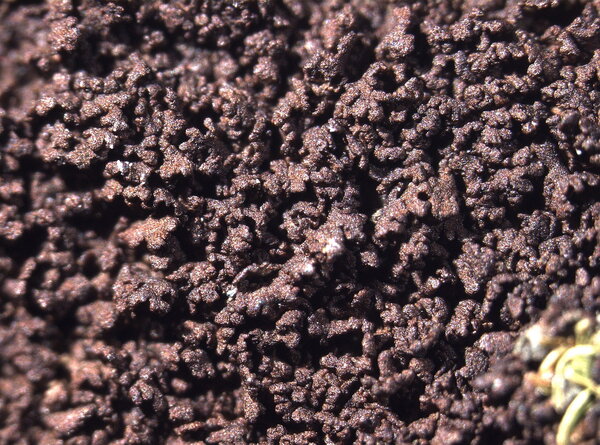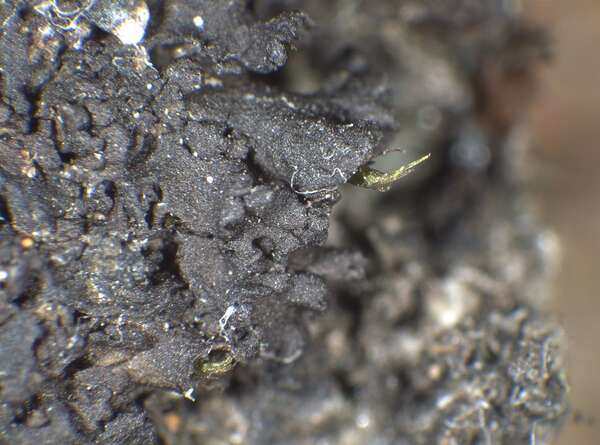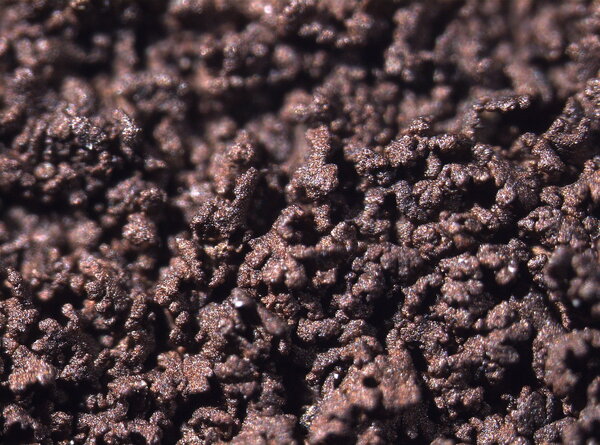Scytinium intermedium (Arnold) Otálora, P.M. Jørg. & Wedin
Fungal Divers., 64, 1: 290, 2013. Basionym: Leptogium minutissimum var. intermedium Arnold - Flora, 50: 122, 1867.
Synonyms: Leptogium intermedium (Arnold) Arnold; Leptogium minutissimum auct. non (Flörke) Fr.
Distribution: N - Frl (TSB 15419), Ven (Thor & Nascimbene 2007), TAA (Nascimbene & al. 2007b), Lomb (Jørgensen 1994, Otálora & al. 2008), Piem (Isocrono & al. 2004, Otálora & al. 2008). C - Tosc (Otálora & al. 2008), Umb (Ravera & al. 2006, 2006b), Laz (Herb. Ravera 4886), Sar. S - Camp, Si.
Description: Thallus squamulose, slightly gelatinous when wet, bluish grey to dark brown, often paler in the basal, less exposed parts, 50-100 µm thick, loosely attached, forming up to 3 cm wide patches. Squamules smooth to slightly wrinkled, (0.2-)0.5-1 mm broad, elongate, ascending, contiguous to imbricate, with a usually down-turned, entire or shallowly incised margin; lower surface paler blue-grey, with scattered tufts of white hapters. Upper and lower pseudocortex of a single layer of angular, more or less isodiametrical, 5-8 µm wide cells, the layer inbetween well-separated from cortex, largely cellular, with densely packed, elongate hyphae and loosely arranged chains of Nostoc. Apothecia lecanorine, sessile, strongly constricted at base, 0.5-1(-1.5) mm across, with a brown, concave, smooth disc and a thick thalline margin. Thalline exciple 40-60 µm wide; proper exciple euparaplectenchymatous, 5-10 µm wide; epithecium pale brown; hymenium colourless, 90-180 µm high, I+ blue; paraphyses coherent, mostly simple, c. 1 µm thick at mid-level, the apical cells slightly swollen; hypothecium colourless. Asci 8-spored, narrowly clavate, the apex strongly thickened, the apical dome K/I+ pale blue, with a downwardly projecting K/I+ deep blue tubular structure. Ascospores submuriform, hyaline, broadly ellipsoid, 20-35 x 8-13 µm. Photobiont cyanobacterial (Nostoc, the cells in short chains). Spot tests: all negative. Chemistry: without lichen substances. Note: a mainly temperate species found on soil, occasionally on the mossy bases of ancient trunks, more rarely on calcareous rocks.
Growth form: Squamulose
Substrata: bark, soil, terricolous mosses, and plant debris
Photobiont: cyanobacteria, filamentous (e.g. Nostoc, Scytonema)
Reproductive strategy: mainly sexual
Poorly known taxon in need of further study
Commonnes-rarity: (info)
Alpine belt: absent
Subalpine belt: extremely rare
Oromediterranean belt: absent
Montane belt: extremely rare
Submediterranean belt: very rare
Padanian area: absent
Humid submediterranean belt: very rare
Humid mediterranean belt: absent
Dry mediterranean belt: absent

Predictive model
Herbarium samples
Growth form: Squamulose
Substrata: bark, soil, terricolous mosses, and plant debris
Photobiont: cyanobacteria, filamentous (e.g. Nostoc, Scytonema)
Reproductive strategy: mainly sexual
Poorly known taxon in need of further study
Commonnes-rarity: (info)
Alpine belt: absent
Subalpine belt: extremely rare
Oromediterranean belt: absent
Montane belt: extremely rare
Submediterranean belt: very rare
Padanian area: absent
Humid submediterranean belt: very rare
Humid mediterranean belt: absent
Dry mediterranean belt: absent

Predictive model
| Herbarium samples |
 INDEX FUNGORUM
INDEX FUNGORUM
 GBIF
GBIF
 DOLICHENS
DOLICHENS
